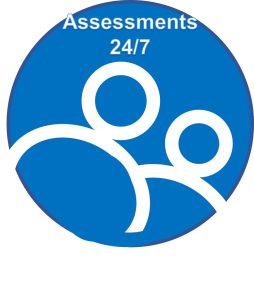Published with Permission from Assessments 24/7.
This is a Monday blog series; our regular coaching blog will be published on Thursday’s.

This blogs series has explored DISC styles, working with, and adapting to each, and how to develop, help them make decisions, and motivate people based on their DISC style. Here are tips for complimenting, counseling, and correcting the DISC styles.
Complimenting the four styles
Dominance – High “D” Style
- Mention their achievements, upward mobility, and leadership potential.
- Omit personal comments and focus on their track record: “Jones, you’ve exceeded our company goals every month for the past year and have put in more hours than anybody but the top officials here. The CEO has his eye on you for an upcoming VP slot.”
Influence – High “I” Style
- Pay direct personal compliments to them when legitimately deserved.
- Mention their charm, friendliness, creative ideas, persuasiveness, and/or appearance (or better yet, all of the above).
- They willingly accept “general praise”: “We are so lucky to have you with us, Dee. You’re a real gem.”
Steadiness – High “S” Style
- Mention their teamwork and dependability.
- Comment on how others regard them, how well they get along with co-workers, and how important their relationship-building efforts have been to the company.
- Effusiveness can arouse their suspicions, so stick to praising what they have done rather than personal attributes.
Conscientious – High “C” Style
- Mention their efficiency, thought processes, organization, persistence, and accuracy.
- Do not mix personal and professional comments unless you know them very well.
- One C told us: “Compliments don’t mean much to me. But I do like genuine, heartfelt appreciation once in a while.”
- Keep praise simple and concise.
Counseling the four styles
Dominance – High “D” Style
- Stick to the facts.
- Draw them out by talking about the desired results; then DISCuss their concerns.
- Focus on tasks more than feelings.
- Ask them how they would solve problems: “Anne, we’ve heard comments that need to be addressed. It seems some of your employees do not feel appreciated for the extra hours they have been putting in for you. They have worked 14-hour days to beat your deadline. How do you think we can bolster their morale?”
Influence – High “I” Style
- Give them ample opportunity to talk about whatever may be bothering them.
- Pay attention to both facts and feelings but put your primary emphasis on their feelings.
- Involve them by asking how they could solve a challenge or problem.
- Sometimes, just airing their feelings and thoughts relieves tension for I’s.
- Talking allows them to get something off their chests and can even become an end in itself since their energy is largely influenced by the quality of their relationships.
Steadiness – High “S” Style
- Understand the emotional side of their situation by drawing them out through questioning and listening
- They are disrupted by change and the unknown.
- Reduce their fears by showing how specific changes will benefit them and others: “Barbara, moving to Dallas will be an adjustment for all of us at first, but 80% of our staff has agreed to go. The company will move you and your family, sell your house, and give you a 10% bonus for loyal service.”
Conscientious – High “C” Style
- Draw them out by asking, “How would you…?” questions about problems.
- They express thoughts indirectly, so persist in your attempts to get them to talk.
- They need to plan for change so they can identify and bring under control any key considerations that have to be addressed.
- When possible, allow them to investigate possible repercussions, especially at the beginning stages. That way they will become more comfortable with possible changes.
Correcting the four styles
Dominance – High “D” Style
- Describe what results are desired.
- Show the gap between actual and desired.
- Clearly suggest the needed improvement and establish a time to get back to you: “We need to streamline communication so that one hand knows what the other is doing. Last month, we had two separate divisions calling on the same CEO for corporate donations. I want you to work up a plan to keep everybody informed of who’s working on what so we do not duplicate our efforts. Get back to me by the end of the week.”
Influence – High “I” Style
- They avoid facing problems and if pressure persists, may walk away from the problem.
- Sometimes stress manifests itself in animated panic. “I can’t talk now, Hal. It’s really hit the fan this time!”
- Let them specifically know the challenge and define the behaviors to solve the problem.
- Confirm the mutually agreeable action plan (in writing) to prevent future problems.
- Use positive, optimistic questions and phrases: “How’d you like to increase your sales to your normal range and beyond?”
Steadiness – High “S” Style
- Reassure them that you only want to correct a specific behavior, not them personally
- They tend to take things personally, so remove the “something is wrong with you barrier” as quickly as possible
- Point out in a non-threatening way what they are already doing right while also emphasizing what needs changing: “Norma, I admire your persistence, but we have to add more details to the proposal before we send it out. For example…”
Conscientious – High “C” Style
- Show them how to get a job done and they will master and modify it to suit their needs.
- Specify the exact behavior that is indicated and how you would like to see it changed.
- Mutually agree on checkpoints and timeframes.
- Allow them to save face, as they fear being wrong. “Nelson, you produce excellent work and always hit your deadlines. Our new software platform will help you to be even more efficient. I’d you to take a training course to get up to speed quickly…”
In the next blog there are tips for delegating to and acknowledging each DISC style.




